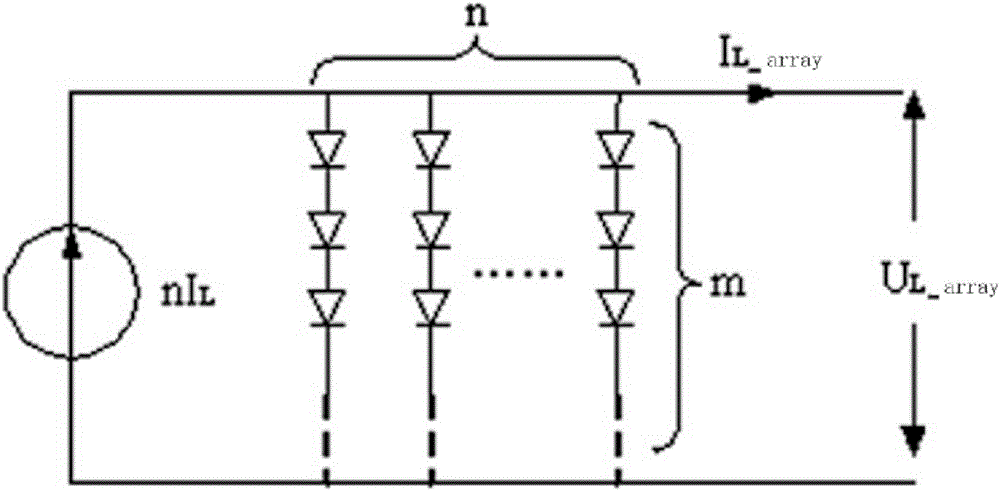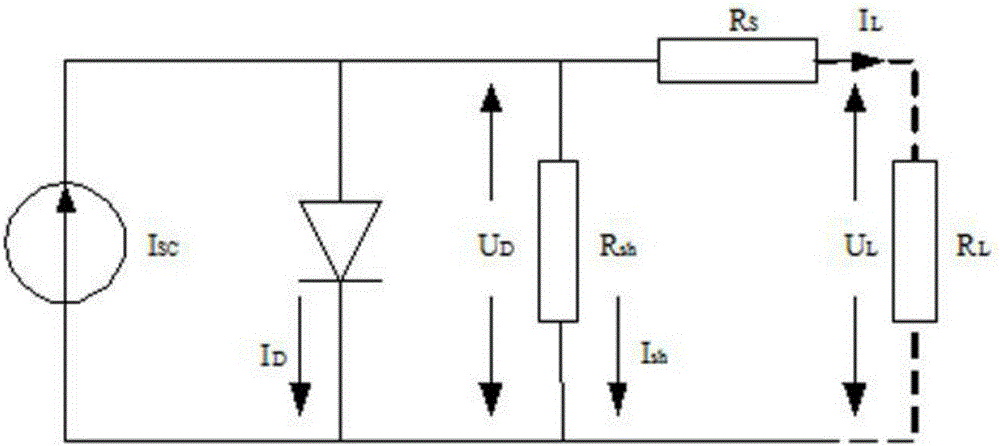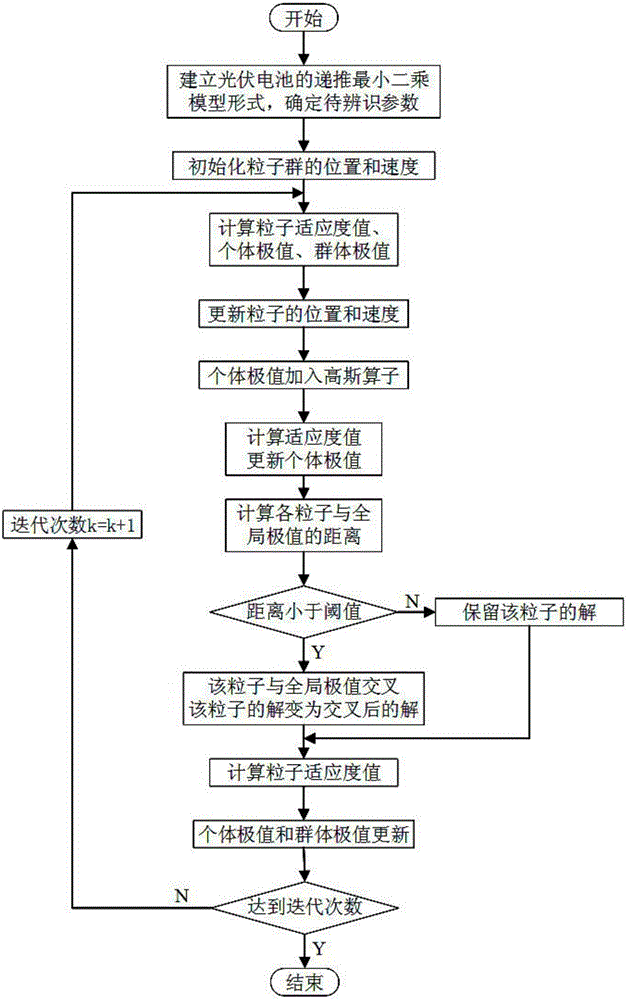Photovoltaic cell parameter identification method based on improved particle swarm algorithm
A technology for improving particle swarms and photovoltaic cells. It is used in electrical digital data processing, calculation, and calculation models. It can solve problems such as poor convergence accuracy, slow convergence speed, and inability to overcome genetic algorithms that are prone to fall into prematurity. Easy to test and converge Fast speed, good effect of global optimization ability
- Summary
- Abstract
- Description
- Claims
- Application Information
AI Technical Summary
Problems solved by technology
Method used
Image
Examples
Embodiment 1
[0038] Embodiment 1. An m×n type photovoltaic module array in a photovoltaic grid-connected power generation system.
[0039] See attached Figure 1-A , the photovoltaic cell that constitutes the photovoltaic module is actually a large-area planar diode, and its work can be described by the equivalent circuit of a single diode in Figure 1; in the figure R L is the external load of the photovoltaic cell, and the output voltage of the photovoltaic cell is U L , the output current is I L .
[0040] See attached Figure 1-B , arrange a certain number of photovoltaic modules in series and parallel on a fixed support to obtain a photovoltaic array; assuming that the photovoltaic modules that constitute the photovoltaic array have ideal consistency, there are m series modules and n parallel modules, that is, photovoltaic parallel A series-parallel m×n type photovoltaic module array in a grid power generation system.
Embodiment 2
[0041] Embodiment 2, the implementation flow framework of the present invention.
[0042] See attached figure 2 , this embodiment gives the process framework of the recursive least squares photovoltaic cell parameter identification method with forgetting factor: establish the recursive least squares model form of the photovoltaic cell and determine the parameters to be identified→initialize the position and velocity of the particle swarm→calculate Particle fitness value, individual extremum, group extremum → update particle position and velocity → add Gaussian operator to individual extremum → calculate fitness value and update individual extremum → calculate the distance between each particle and the global extremum, if the distance If it is less than the threshold, the particle crosses the global extremum and the solution of the particle becomes the solution after crossing. If the distance is not less than the threshold, the solution of the particle is retained → then calcu...
Embodiment 3
[0043] Embodiment 3, specific implementation steps of the present invention.
[0044] Referring to accompanying drawings 1-2, the photovoltaic cell parameter identification method based on the improved particle swarm optimization algorithm includes the following implementation steps:
[0045] Step 1: Establish the photovoltaic cell I-V characteristic equation shown in the following formula, and determine the parameters to be identified; Among them, U L and I L are the output voltage and output current of the photovoltaic module, respectively, I sc is the photogenerated current, I 0 is the saturation current of the photovoltaic module when there is no light, R s is the series resistance of the photovoltaic module, R sh is the bypass leakage resistance of the photovoltaic module, q is the electronic charge, A is the constant factor, K is the Boltzmann constant, T is the absolute temperature value of the photovoltaic module under certain working conditions; determine the pa...
PUM
 Login to View More
Login to View More Abstract
Description
Claims
Application Information
 Login to View More
Login to View More - R&D
- Intellectual Property
- Life Sciences
- Materials
- Tech Scout
- Unparalleled Data Quality
- Higher Quality Content
- 60% Fewer Hallucinations
Browse by: Latest US Patents, China's latest patents, Technical Efficacy Thesaurus, Application Domain, Technology Topic, Popular Technical Reports.
© 2025 PatSnap. All rights reserved.Legal|Privacy policy|Modern Slavery Act Transparency Statement|Sitemap|About US| Contact US: help@patsnap.com



